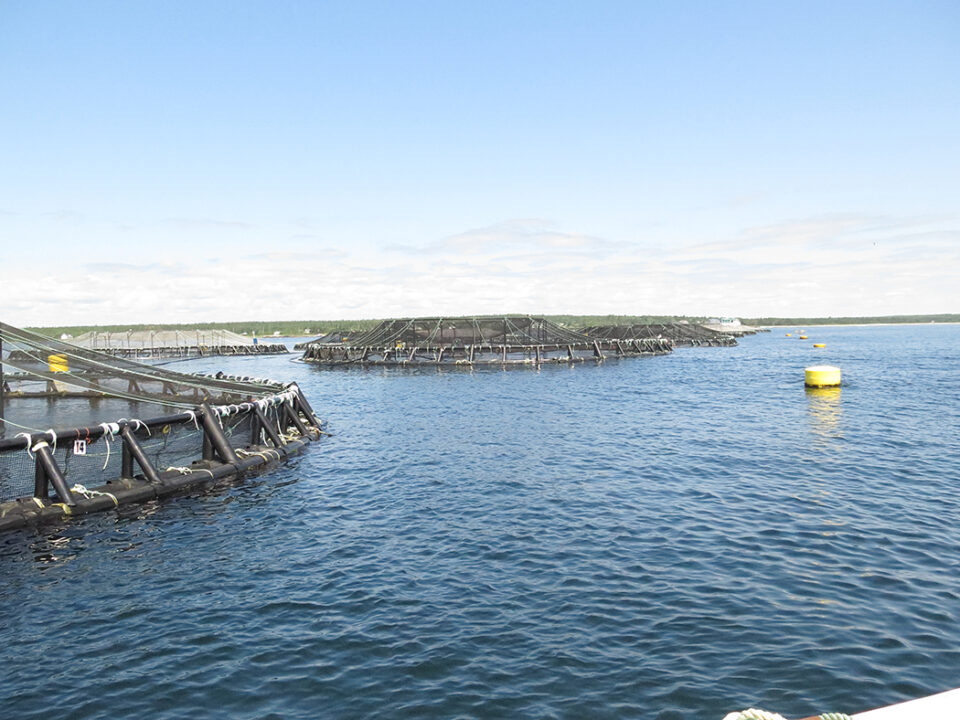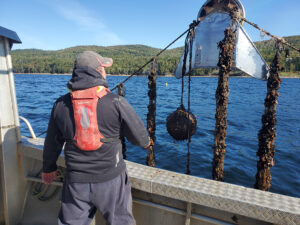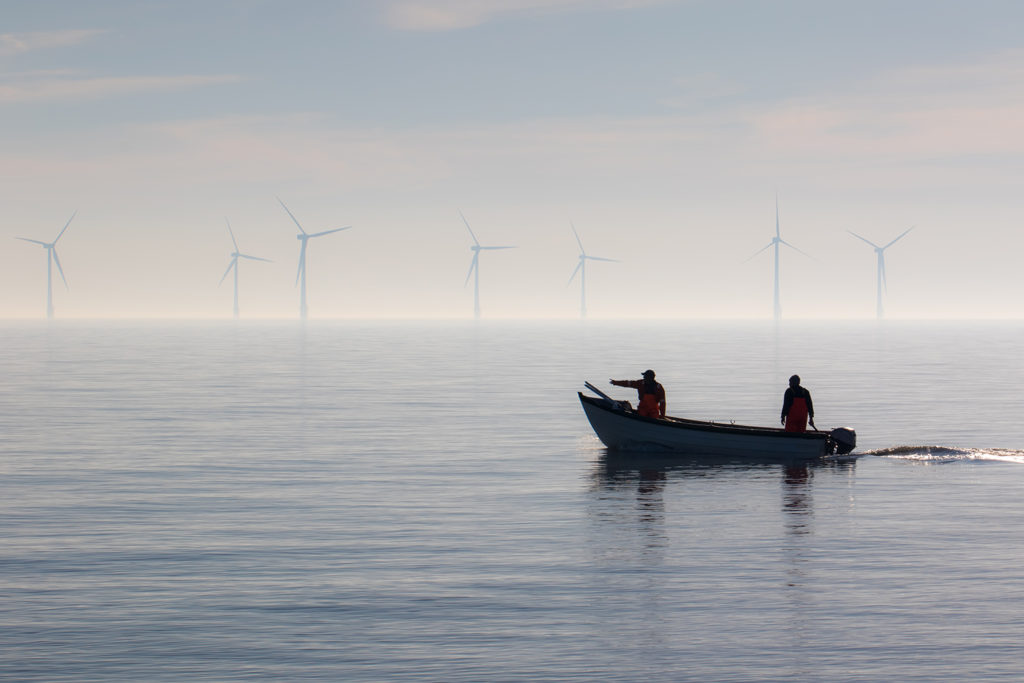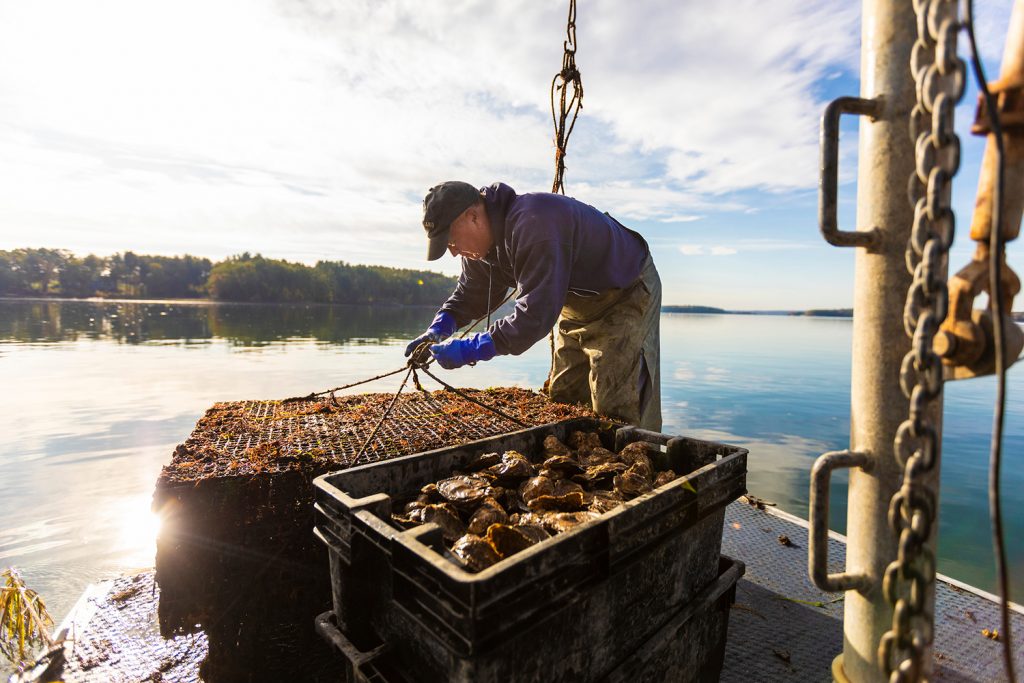One-year CMAR project to identify coastal communities and seafood sectors threatened by climate change and prioritize adaptation plans

The Centre for Marine Applied Research (CMAR) has initiated a one-year project to assess the climate change readiness of seafood-dependent communities in Nova Scotia. Partially funded by the Nova Scotia Department of Fisheries and Aquaculture (NSDFA), the rapid vulnerability assessment will be used to inform provincial and industry preparation for climate change.
“Our aim is to help government agencies and other decision-makers to identify which coastal communities and seafood sectors are the most likely to be negatively impacted by climate change,” said Dr. Leigh Michael Howarth, a research fellow at CMAR.
The project is supported by a CMAR technical white paper published in June 2021, which reviewed the potential impacts of climate change on Nova Scotia’s seafood industries and coastal communities. The 81-paged paper also investigated current best practices for assessing vulnerability and recommended the development of a vulnerability index for assessing the risk that climate change poses to seafood industry-dependent communities in the province. Such a tool could identify which coastal communities and seafood sectors are the most threatened by climate change, helping to prioritize climate change adaptation plans.
“Based on these recommendations, the NSDFA Marine Division partially funded CMAR to initiate a year-long, ‘rapid vulnerability assessment’ of Nova Scotia’s fishing communities,” said Howarth.
The white paper was presented to several fishing industry representatives and the Department of Fisheries and Aquaculture. It sparked discussion within several provincial and federal agencies on how best to plan for climate change.
“There seems to be a general agreement that the effects of climate change are already being felt in Nova Scotia, both at sea and on land,” said Howarth. “I find it encouraging that so many government agencies, academics, and fishing industry organizations are already thinking ahead on how best to adapt.”
As the white paper details, the climate crisis poses a potentially serious threat to Nova Scotia’s coastal communities and industries, which are highly dependent on coastal resources for employment and infrastructure. Over 70 percent of Nova Scotia’s population lives within 20 km (12 miles) of the coast and 14 percent of all jobs in the province are ocean-related.
“The total number of people employed by the fishing, aquaculture and seafood processing industries is higher in Nova Scotia than any other province in Canada,” said Howarth. “Data managed by DFO [Fisheries and Oceans Canada] indicate that over 24,450 people in Nova Scotia are employed in fishing, seafood processing, and aquaculture. As many of these jobs and workers are based in coastal rural locations, the seafood industry plays a vitally important role in supporting the communities and economies of coastal rural Nova Scotia.”
Human-caused climate change may disrupt these coastal communities through a range of impacts, including increased coastal erosion and flooding risk, which may damage infrastructure and alter shipping channels. It’s also increasing global ocean temperatures and causing a reduction in pH and oxygen.
“Ocean warming, ocean acidification, and sea-level rise are all occurring faster in Nova Scotia than the global average,” said Howarth. “In particular, ocean warming has already been identified to be a contributing factor in some localized declines in snow crab, northern shrimp, Atlantic mackerel, and Atlantic herring. In the future, continued ocean warming has the potential to affect a wide range of commercially targeted species in Nova Scotia. These effects range from being negative, positive, and neutral.”
The Nova Scotian aquaculture industry is also at risk. As detailed in the white paper, blue mussels (Mytilus edulis) and American oysters (Crassotrea virginica) may be negatively affected by ocean warming, ocean acidification, harmful algal blooms and increased disease. Ocean warming may also negatively impact the production of Atlantic salmon (Salmo salar) if temperatures rise beyond, and oxygen concentrations decline below, optimal thresholds. However, it also suggests that the aquaculture industry may have an adaptive advantage over wild fisheries.
“The aquaculture industry is potentially less at risk to climate change as growers can potentially choose: (1) to grow more resilient or locally suitable species or strains; (2) site their farms in areas with suitable growing conditions; and (3) growers also have some control over the external environment, such as supplementing oxygen when needed,” said Howarth.

In conducting the rapid vulnerability assessment, CMAR has finished collating data on fishing catches, projected levels of ocean warming, and how flexible different fishing fleets are in terms of what they can catch, where they can fish, and when they can fish. These data are now being analyzed and mapped across the province.
The rapid vulnerability assessment will compare the exposure, sensitivity, adaptive capacity and overall vulnerability of Nova Scotia’s fishing communities and sectors to climate change. Exposure involves looking at what is creating the impact and how likely is it to occur, while sensitivity focuses on identifying what factors can make an area or industry at higher risk to the impact. The adaptive capacity seeks to determine what factors may help an area or industry adjust to the impact.
“Predicting the effects of any potential impact, whether it be an earthquake, volcano, or climate change, can be incredibly complex,” said Howarth. “It requires a lot of different data. For example, if we’re talking about a volcano, we might want to know the frequency and magnitude of past eruptions, the capability for local governments to monitor the volcano for warning signs that it might erupt, the distance of nearby towns, and how easy and quickly those towns can be evacuated.”
Overall, the information gathered from this rapid vulnerability assessment will help decision-makers prioritize adaptation efforts. Advanced planning of climate change adaptation will be critical to responding to climate change impacts after they occur.
The assessment aims to be completed by mid-2022, but CMAR is currently applying for external funding to expand this project into a three-year “comprehensive vulnerability assessment,” which would “carry out more detailed investigations into key, representative fishing communities around the province.”
“Overall, predicting the effects of climate change on ocean processes and the seafood industry is highly complex, and no matter how good our science gets, the future always remains uncertain,” said Howarth.
Follow the Advocate on Twitter @GSA_Advocate
Now that you've reached the end of the article ...
… please consider supporting GSA’s mission to advance responsible seafood practices through education, advocacy and third-party assurances. The Advocate aims to document the evolution of responsible seafood practices and share the expansive knowledge of our vast network of contributors.
By becoming a Global Seafood Alliance member, you’re ensuring that all of the pre-competitive work we do through member benefits, resources and events can continue. Individual membership costs just $50 a year.
Not a GSA member? Join us.
Author
-

Lisa Jackson
Associate Editor Lisa Jackson lives in Hamilton, Ontario, Canada. Her work has been featured in Al Jazeera News, The Globe & Mail, The Independent, and The Toronto Star.
Tagged With
Related Posts

Responsibility
GOAL 2021: Climate change and the ‘dilemma’ of food systems
The latest virtual GOAL conference session dissected the role of seafood production systems and how they perform in a changing climate.

Responsibility
Experts discuss climate change threats to aquaculture
How will climate change impact the aquaculture sector? Expert panelists discuss impacts to insurance and how data is driving decision-making.

Responsibility
One ocean: At the intersection of green energy and a blue economy
To mitigate the impacts of climate change and bolster ocean health, research suggests turning to one of the planet’s powerful forces: The ocean itself.

Responsibility
TNC: Restorative aquaculture can improve marine habitats, biodiversity
A report from The Nature Conservancy shows restorative or regenerative aquaculture can benefit ecosystems, marine animal habitats and biodiversity.


